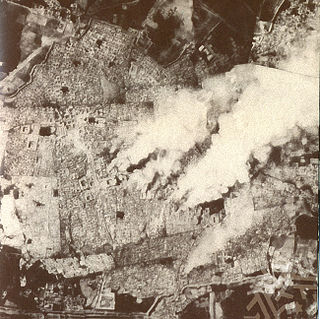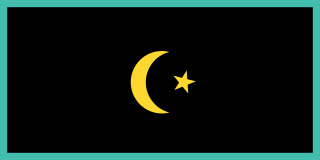Related Research Articles

Uzbekistan is a landlocked country in Central Asia. It is itself surrounded by five landlocked countries: Kazakhstan to the north; Kyrgyzstan to the northeast; Tajikistan to the southeast; Afghanistan to the south, Turkmenistan to the south-west. Its capital and largest city is Tashkent. Uzbekistan is part of the Turkic languages world, as well as a member of the Organization of Turkic States. While the Uzbek language is the majority spoken language in Uzbekistan, Russian is widely used as an inter-ethnic tongue and in government. Islam is the majority religion in Uzbekistan, most Uzbeks being non-denominational Muslims. In ancient times it largely overlapped with the region known as Sogdia, and also with Bactria.

The Turkmen Soviet Socialist Republic, also known as Soviet Turkmenistan, the Turkmen SSR, Turkmenistan, or Turkmenia, was one of the constituent republics of the Soviet Union located in Central Asia existed as a republic from 1925 to 1991. Initially, on 7 August 1921, it was established as the Turkmen Oblast of the Turkestan ASSR before being made, on 13 May 1925, a separate republic of the USSR as the Turkmen SSR.

Khiva is a district-level city of approximately 93,000 people in Khorazm Region, Uzbekistan. According to archaeological data, the city was established around 2,500 years ago. In 1997, Khiva celebrated its 2500th anniversary. It is the former capital of Khwarezmia, the Khanate of Khiva, and the Khorezm People's Soviet Republic. Itchan Kala in Khiva was the first site in Uzbekistan to be inscribed on the World Heritage List (1991). The astronomer, historian and polymath, Al-Biruni was born in either Khiva or the nearby city of Kath.

The Basmachi movement was an uprising against Imperial Russian and Soviet rule in Central Asia by rebel groups inspired by Islamic beliefs.
The flags of the Soviet Socialist Republics were all defaced versions of the flag of the Soviet Union, which featured a golden hammer and sickle and a gold-bordered red star on a red field.

The Khorezm People's Soviet Republic was the state created as the successor to the Khanate of Khiva in February 1920, when the Khan abdicated in response to pressure. It was officially declared by the First Khorezm Kurultay (Assembly) on 26 April 1920. On 20 October 1923, it was transformed into the Khorezm Socialist Soviet Republic.

The Khanate of Khiva was a Central Asian polity that existed in the historical region of Khwarazm from 1511 to 1920, except for a period of Afsharid occupation by Nader Shah between 1740 and 1746. Centred in the irrigated plains of the lower Amu Darya, south of the Aral Sea, with the capital in the city of Khiva. It covered present-day western Uzbekistan, southwestern Kazakhstan and much of Turkmenistan before the Russian conquest at the second half of the 19th century.

The Communist Party of Khorezm was a political party that existed in the final months of the Khanate of Khiva, and after 26 April 1920, in the Khorezm People's Soviet Republic.

The Yomut or Yomud is a Turkmen tribe that lives in Western and Central Asia, including Gorgan, Iran; Turkmenbashi, Turkmenistan; the eastern Caspian shores; Khiva, Uzbekistan; and Dashoguz, Turkmenistan.

The Bukharan People's Soviet Republic was a Soviet state that governed the former Emirate of Bukhara during the years immediately following the Russian Revolution. In 1924, its name was changed to the Bukharan Socialist Soviet Republic. After the redrawing of regional borders, its territory was assigned mostly to the Uzbek SSR and some to the Turkmen SSR.

In the Russo-Khivan War of 1873, Russia conquered the Khanate of Khiva, and it became a Russian protectorate.
The Khivan Revolution refers to the events of 1917–1924, which led to the elimination of the Khanate of Khiva in 1920, the formation of the Khorezm People's Soviet Republic, the intervention of the Red Army, the mass armed resistance of the population and its suppression, the inclusion of the republic into the Soviet Union on 27 October 1924, as a separate union republic, the elimination of the newly established republic as a result of national delimitation and the formation of the Uzbek SSR, the Turkmen SSR in 1924.
The siege of Khiva was a military operation between 19 and 24 January 1924 by Basmachi insurgents to conquer the city of Khiva from the Red Army.

Isfandiyar Khan, or Asfandiyar Khan, born Isfandiyar Jurji Bahadur, was the Khan of Khiva between September 1910 and 1 October 1918, the 53rd Khan of Khiva, and the 12th Khongirad ruler of the Uzbeks. He was overthrown and executed by Junaid Khan in 1918.

Seyid Islam Khodja was the Grand Vizier of the Khiva Khanate from 1898 until his death in 1913.
Bekjon Rakhmonov, known commonly as Mulla Bekjon, was an Uzbek and Soviet statesman, political and public figure, educator, linguist, polyglot, and journalist. He was one of the most prominent figures of the Khwarezmian Jadid movement and the Young Khivans.

Junaid Khan ; (b.1857/62–1938) was a Turkmen tribal leader who became the Chief of the Armed Forces and later the de facto and last ruler of the Khanate of Khiva.
Palvanniyaz Khodja Yusupov was a statesman and representative of the Young Khivan movement, a branch of Jadidism in the Khiva Khanate.
Muhammad Amin Bahadur Khan, was the 7th Khan of the Uzbek Kungrat dynasty in the Khanate of Khiva. He reigned between 1845 and 1855, when he was killed in battle.
The Siege of Petro-Alexandrovsk was an unsuccessful siege of Petro-Alexandrovsk, which was under control of the Bolsheviks, by troops from the Khanate of Khiva under command of Junaid Khan, between 24 November and 5 December 1918.